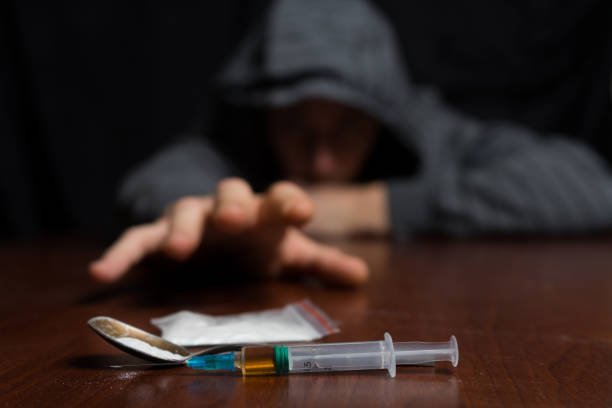On this page, we explore the ways in which the youth could bring about awareness on the negative effects of drug abuse in South African context.
Youth-driven Initiatives on the Negative Effects of Drug Abuse: A South African Perspective
South Africa, like many countries, grapples with a significant drug abuse problem, especially among the youth. The implications of drug abuse are far-reaching, affecting not only the individual user but also families, communities, and society at large. However, the youth, equipped with passion, creativity, and digital fluency, have the potential to drive meaningful awareness campaigns on the issue. This article outlines the various ways young South Africans can spearhead awareness on the adverse effects of drug abuse.
1. Social Media Campaigns
The digital age has placed unparalleled power at the fingertips of the youth. Social media platforms such as Instagram, Twitter, and TikTok are not just mediums for entertainment but potent tools for activism and awareness. By launching hashtag campaigns or creating shareable content, young people can reach thousands, if not millions, in a short time span. Personal stories of recovery, illustrations showcasing the physical and emotional toll of drug abuse, and informative graphics can virally spread, creating a ripple effect of awareness. Moreover, since the medium is controlled by the user, it allows for unfiltered and genuine narratives, something that resonates deeply with viewers.
Fact: According to a 2020 survey, over 22 million South Africans are active social media users.
- Example: Young people can harness platforms like Instagram, Twitter, or TikTok to launch hashtag campaigns, sharing stories of recovery or illustrating the detrimental effects of drug abuse through impactful visuals and narratives.
2. Community Workshops & Forums
Community engagement is paramount when addressing issues like drug abuse. By organizing community workshops and forums, the youth can create spaces for open dialogue and exchange. Inviting recovering addicts to share their lived experiences paints a vivid picture of the pitfalls of drug dependency. Having healthcare professionals talk about the physiological and psychological effects provides the scientific backing needed to understand the severity of the issue. And when families affected by drug abuse share their tales of despair and hope, it underscores the far-reaching implications of the problem. Such platforms not only educate attendees but also offer a support system, signaling that the community stands united against drug abuse.
- Example: Youth groups in Johannesburg have previously organized community workshops where they invite recovering addicts, healthcare professionals, and affected families to share their experiences, providing a first-hand account of the drug menace.
3. Arts & Performance
Art has always been a powerful medium to convey deep-seated emotions and messages. The visceral impact of watching a play or a dance that showcases the journey of an addict can stir emotions in a way few other mediums can. By employing arts and performance, the youth can craft narratives that are both engaging and enlightening. Whether it’s through poignant theatre performances in schools or community-driven street plays, the emotional weight of the subject, when depicted through art, tends to stay with the audience long after the curtains drop, prompting reflection and conversation.
- Example: Drama and dance troupes in Cape Town have used theatre to depict the downward spiral caused by drugs. Such performances, often staged in schools and community centers, leave a lasting impression and stimulate discussion.
4. Educational School Programs
The school environment is crucial in shaping the thoughts, beliefs, and behaviors of young individuals. By integrating drug awareness programs within schools, there’s an opportunity to address the issue at its nascent stage. Peer-led initiatives, where students are trained to impart drug education to their classmates, can be particularly effective. Coming from a peer, the message might be seen as more relatable and genuine, and less of a lecture. Moreover, these programs can be tailored to address local issues, slang, and trends, making them all the more relevant.
Fact: Early drug use can be a predictor for future substance abuse problems.
- Example: Peer-led programs where trained students provide drug education to their classmates have been successful. These programs often resonate more as students tend to listen more closely to their peers.
5. Collaborations with Celebrities & Influencers
Celebrities and influencers, with their vast reach and influence, can amplify any message manifold. When youth groups join forces with prominent personalities who either have personal experiences with drug abuse or are simply passionate about the cause, the resultant campaigns can have unparalleled impact. A simple message, tweet, or video from a well-known figure can reach millions. Moreover, the youth, who often look up to these figures, might be more receptive to a message endorsed by someone they admire.
- Example: Well-known South African personalities, who’ve either had personal experiences with drug abuse or are passionate about the cause, can partner with youth groups to amplify the message. Their broad reach can significantly increase the campaign’s impact.
6. Digital Storytelling
Storytelling is an age-old method of conveying messages, and in today’s digital world, its scope has expanded exponentially. Through platforms like YouTube or local streaming services, young filmmakers have the opportunity to reach a vast audience. Web series or short films that depict the stark reality of drug abuse can be both engaging and educational. Digital storytelling allows for creativity – be it through docu-dramas, animated series, or interactive content, the youth can craft compelling narratives that highlight the perils of drug dependency.
Fact: South Africa’s internet penetration rate has been on a consistent rise, with the youth being the primary consumers of online content.
- Example: A group of young filmmakers can develop web series or short films that focus on the consequences of drug abuse, making them available on platforms like YouTube or local streaming services.
7. Engaging with Traditional Media
While the digital realm is burgeoning, traditional media – like radio and newspapers – still command significant influence, especially in areas with limited internet access. Radio, being a widely consumed medium in South Africa, can be particularly effective. Youth-driven discussions, testimonies, expert interviews, and even radio dramas on the subject can foster community-wide awareness. These mediums also have the advantage of reaching older demographics, ensuring that the message isn’t confined to just the younger generation.
- Example: Collaborating with local radio stations popular among the youth to broadcast testimonies, expert interviews, and discussions about drug abuse can be highly effective, especially in reaching areas with limited internet access.
8. Organize Awareness Walks or Runs
Events like awareness walks or runs serve a dual purpose. They physically mobilize communities while emphasizing the importance of the cause. Such events, often accompanied by banners, placards, and slogans, become a visual testament to the community’s commitment against drug abuse. They also emphasize the contrast between a healthy lifestyle and one marred by drug dependency. Furthermore, these events often garner media attention, further amplifying the message.
- Example: In Durban, an annual “Run Against Drug Abuse” event can be organized, which not only promotes the message of sobriety but also emphasizes physical well-being.
9. Interactive Workshops Using Technology
Modern technology, like Virtual Reality (VR), offers immersive experiences. By simulating the distressing and disorienting experiences of drug addiction, VR can provide a glimpse into the harrowing world of an addict. Such workshops, while not replacing real-world experiences, can be potent in illustrating the dangers of drug abuse. For many, especially those who’ve never been exposed to the world of drugs, this can be a revelatory and deterrent experience.
Fact: VR (Virtual Reality) can simulate the distressing experiences of drug addiction.
- Example: Workshops where attendees can experience the disorienting and disturbing effects of drug use through VR can be a potent tool in drug education.
10. Collaboration with NGOs and Governmental Bodies
Working in tandem with established organizations, whether they’re non-profits like the South African National Council on Alcoholism and Drug Dependence (SANCA) or government health agencies, offers a multitude of benefits. Firstly, these organizations come with a wealth of experience, resources, and credibility. Their longstanding presence in the field provides insights that can guide youth-driven initiatives more effectively. Collaborative efforts, such as joint awareness campaigns or community outreach programs, can have a broader reach and a more substantial impact. Secondly, partnering with these organizations provides a platform for the youth to voice their concerns and ideas at a more systemic level, influencing policy changes or strategic interventions. Such collaborations not only amplify the message but also ensure that it’s sustained and backed by effective action plans.
- Example: Partnering with established organizations like the South African National Council on Alcoholism and Drug Dependence (SANCA) to launch joint initiatives can lend more weight and credibility to the youth-driven campaigns.
Also Read:
- The Main Aims of SANCA
- Ways in Which the Youth Could Bring About Awareness on the Negative Effects of Drug Abuse
- Available Support for People Who Abuse Substances in South Africa
- The Steps to Follow in order to Admit a Person to be Reh
Conclusion
A Multifaceted Approach: Tackling drug abuse, particularly in a diverse nation like South Africa, necessitates a comprehensive strategy that brings together various sectors of society. From leveraging the power of social media to resonating with the emotional depth of art, the avenues to create awareness are vast and potent. The youth, in particular, with their inherent understanding of modern communication tools, play a pivotal role. Their unique blend of passion and tech-savviness offers an opportunity to craft messages that not only educate but deeply resonate with their peers.
Collaboration is Key: While individual initiatives hold value, the true potency of any awareness drive lies in collaborations. Partnering with celebrities amplifies reach, while aligning with NGOs and government bodies ensures depth, credibility, and sustainability. Such combined efforts not only cast a wider net but also ensure that the message being relayed is holistic, informed, and actionable. It becomes a collective voice of society that seeks to eradicate the menace of drug abuse.
The Road Ahead: South Africa stands at a crucial juncture. While the challenges posed by drug abuse are significant, the resources at hand – particularly the energetic and innovative youth – provide hope. As awareness initiatives grow in number and impact, they lay the foundation for a more informed, empathetic, and proactive society. The collective efforts of today are the stepping stones for a brighter, drug-free South Africa tomorrow.






